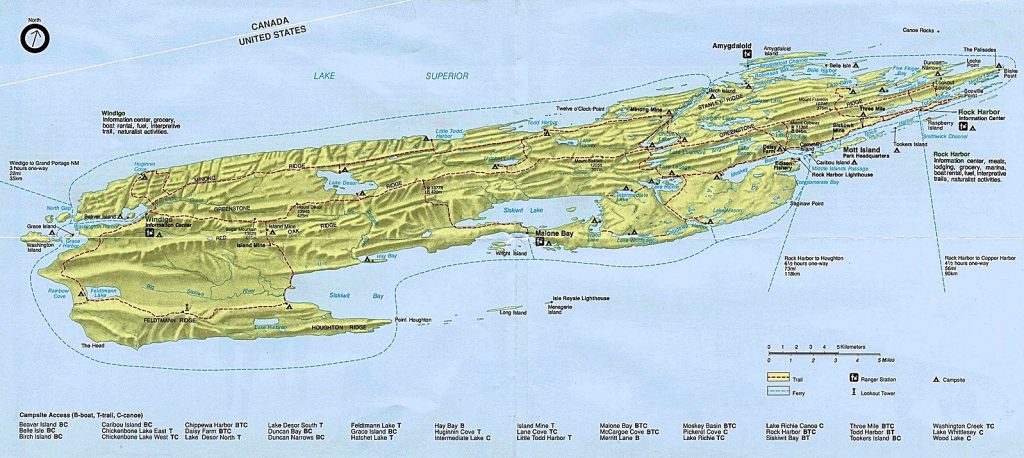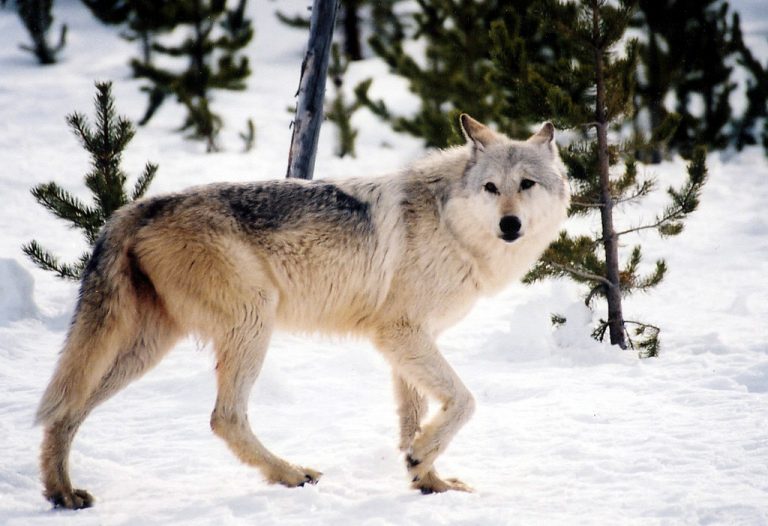The Wolves of the Island… From a Variety of Perspectives
by Max Lulavy, October 2, 2019
Importance of Source Selection
Source selection is crucial in providing accurate and correct information to the world. A journalist’s credibility stems back to where they receive their information from. Dear and Scott suggest that media needs a constant flow of information, so they tend to return to the same sources that will deliver the steady flow of news, leaks, and press conferences that media needs (Dear and Scott, 2015). They continue by adding that it is also important to interview primary and expert sources, as well as those affected by the issue.
Isle Royale: “The Island of Wolves”

Photo Credit: Official National Park Service map of Isle Royale National Park, https://en.wikipedia.org/wiki/File:IsleRoyaleMap.jpg
Kim Todd wrote “The Island of Wolves” in 2017, which discusses the complex history and relationship between wolves and moose on Isle Royale National Park, the 48-mile-long island juxtaposed between Minnesota and Michigan in Lake Superior. In this article, Todd writes about the rich history of the island being “a perfect natural lab: a closed system with one dominant predator, the wolf, relying heavily on one kind of prey, the moose” (85, Todd). However, the study of the ecosystem wasn’t so simple and the constant downfalls and increases in wolf and moose population weren’t as simple as looking to the Lotka-Voltaire model of predator vs prey.
Todd did an excellent job at bringing in many different sources. She begins by introducing many different scientists and experts, including Rolf Peterson, who has been studying the area since 1970, and John Vucetich, the lead scientist on the wolf-moose study. Todd doesn’t stop at interviewing the experts closest to the subject, but also talks with Jennifer Adams, a DNA expert who analyses the inbreeding of the closed wolf population, does her own research by looking into articles from Nature, a reputable magazine on ecology and natural sciences, and looks at the future plans of the National Park Service to introduce 30 more wolves over 3 years. As of March, 2019, the National Park Service has introduced 11 new wolves, bringing the total of wolves to 15 (NPCA, 2019). This proves that Todd has done her research, and her information that she provided in her article from 2017 holds true two years later as they continue to add more wolves.

Photo Credit: Rolf Peterson, Two wolves attack a moose at Isle Royale, Michigan, United States, https://commons.wikimedia.org/wiki/File:Wolves_attack_moose_2012-04-12_001.jpg
Fairness and thoroughness are also shown in “The Island of Wolves” by describing the human-wolf relationship in a historical sense. This is important as wolves are often romanticized today as being a charismatic species that we should bring back. However, Todd explains how even Teddy Roosevelt wrote, “the wolf is the arch type of ravin, the beast of waste and desolation,” in The Wilderness Hunter, 1893 (89, Todd). This shows how our perception of wolves has changed, and how Todd continued to include other aspects of wolves besides trying to restore their population on Isle Royale. Overall, Todd did a fantastic job at including many expert sources, as well as showing the unbiased historical context of wolves relationship with humans since colonization.

Photo Credit: MacNeil Lyons, Grey Wolf in Snow, https://www.flickr.com/photos/usfwsmidwest/6545954933
Work Cited:
Dear, Jennie and Scott, Faron. The Responsible Journalist. New York: Oxford University Press, 2015. Print.
National Parks Conservation Association. March 2019, “VICTORY Wolves at Isle Royale.” Online Access: < https://www.npca.org/advocacy/37-wolves-at-isle-royale>
Todd, Kim. “The Island Wolves.” Orion, June, 2017. Print
Kean, Sam and Folger, Tim. The Best American Science and Nature Writing. Boston: Houghton Mifflin Publishing Company, 2018. Print.
Add a Comment
You must be logged in to post a comment.

